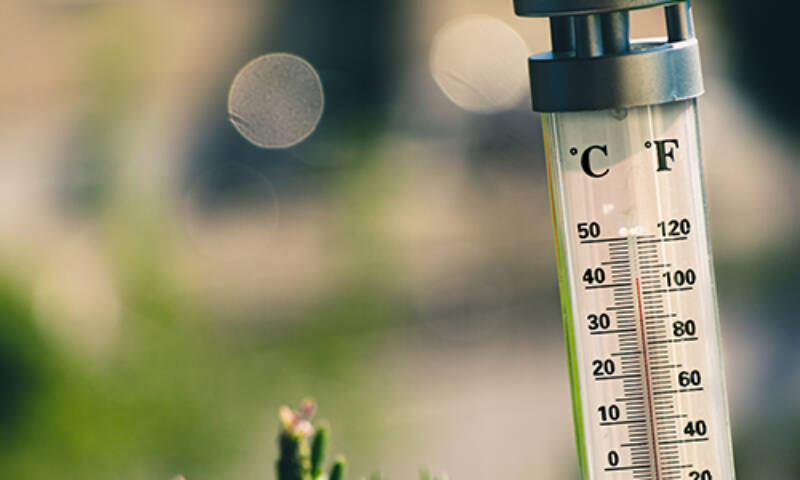
In summer, temperatures can regularly soar up to 30 degrees Celsius. It’s great for relaxing by the pool with a cocktail (or mocktail). But, working in hot weather is a completely different story.
Even indoors, industrial machines emit an enormous amount of heat, causing the mercury to quickly rise in the workplace. Ambient temperatures from 40 to as high as 50°C are no exception. That's why we have put together this list of 7 refreshing tips you can use to help your employees work in a cooler and more comfortable environment.
#1 Ventilation
Ensure the workplace has plenty of ventilation. This will remove hot and humid vapours.
Humidity is also important. Try to keep humidity between 40 and 60 percent. When the humidity is too high, body heat cannot be absorbed by the air.
#2 Sun Protection
Install awnings to stop the sun's rays. Or use screens that reflect radiation.
#3 Alternative working methods
Keep heavy physical activity to a minimum. Allow your employees to use adapted work equipment or apply other working methods.
Work in the morning when it is cooler and ozone levels are much lower.
#4 Sufficient rest
Make arrangements with your colleagues regarding rest periods. For example, schedule heavy work in the morning and light work during the hottest periods. If you haven’t come to any clear arrangements, apply the following rest periods:
| Variation in work procedures | Light work | Semi-heavy work | Heavy work | Very heavy work |
|---|---|---|---|---|
| 45 mins work - 15 mins rest | 29,5°C | 27°C | 23°C | 19°C |
| 30 mins work - 30 mins rest | 30°C | 28°C | 24,5°C | 21°C |
- Light physical work is secretarial work, driving a car
- Semi-heavy physical work: carpentry or driving a tractor
- Heavy: digging, sawing by hand, planing, pushing and pulling wheelbarrows
- Very heavy physical work: heavy digging and excavating, climbing ladders and stairs
#5 Chilled drinks
Provide plenty of chilled drinks for your employees. Remind them to stay hydrated and drink regularly. For example, provide a clear signal or put up signs.
#6 Breathable workwear
Provide light workwear, but make sure your employees are still protected against all primary workplace risks (mechanical or chemical). For example, buy cotton t-shirts or fluorescent polyester t-shirts with underarm ventilation.
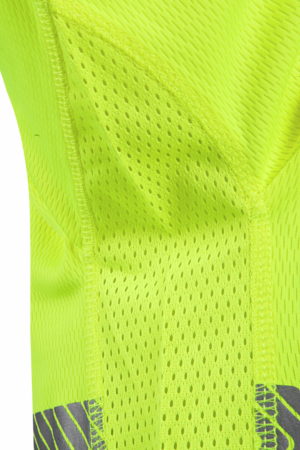
If employees could come into contact with hazardous chemicals, issue them with chemical overalls with a breathable back.
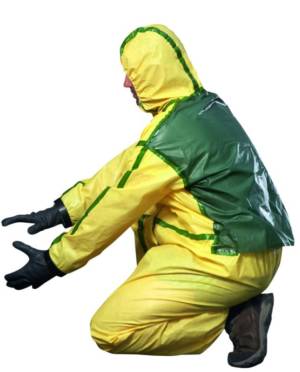
#7 Cooling vests
The purpose of a cooling vest is to prevent heat stress and cool your body.
Heat stress starts innocuously, but can manifest much quicker than you realise through a few dangerous symptoms.
- Loss of concentration
- Muscle cramps
- Fainting
There are currently 2 types of cooling vests: one based on evaporation and one based on cooling packs.
Cooling vest DRY
Evaporation-based cooling vests last for about a day and cool you to approximately 15°C below the ambient temperature. They cool best at low humidity and in areas where there is sufficient airflow. Ideal for outdoor work.
These vests have an opening into which you pour tap water. By distributing the water evenly over the vest, the same cooling effect is experienced all over. The vest has a special piece of fabric that ensures the water remains cool for a long time. The cooling effect of the vest begins immediately as the water evaporates via the holes on the outside.
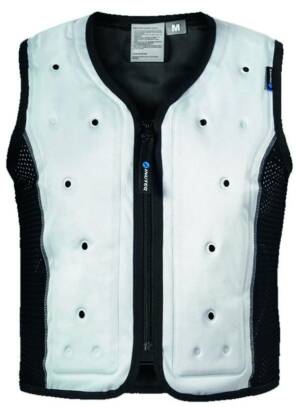
Cooling vest PAC
In extreme heat you need constant cooling, and vests based on evaporation are not sufficiently effective. When this is the case, vests with space for exchangeable cooling elements offer a solution.
These cooling packs are available in different temperatures, depending on what you need in the workplace. The higher the ambient temperature, the higher the temperature of your packs, in order to avoid huge temperature differences and subsequent shock.
They work best for short periods when work must take place in areas with little airflow. They are, therefore, also suitable for wearing under overalls.
Tip: purchase one or two extra packs so you can change them regularly.
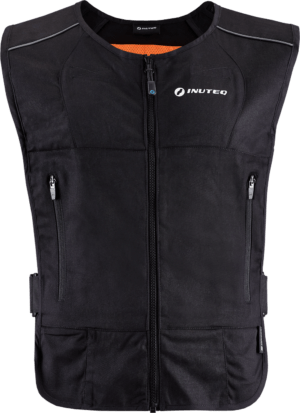

Cooling vest PCM CoolOver
The PCM CoolOver works on the same principle as the PAC vest. Reactivation is quick and easy; simply place the PCM CoolOver in ice water, the freezer or fridge, or store it at a temperature of 3°C or below until the CoolOver fluid completely solidifies.
Available in a 21°C version or a 24°C version.

Conclusion
Even in the case of extreme temperatures, always apply the principle of tackling your risk at its source, then look at collective measures, and finally - provide personal protection.
You can't control the temperature or the sun, but you can control your workplace.